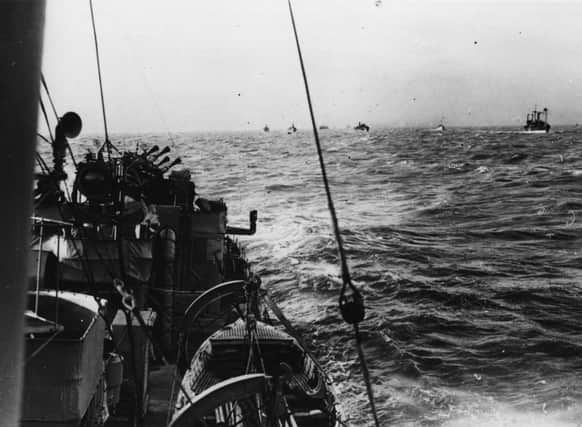VE-Day 75: Rare pictures of the Royal Navy in the Second World War


The war at sea had begun only hours after the declaration of hostilities in September 1939, when a German U-boat fired on the SS Athenia, a British liner en route to Montreal. Some 112 lives were lost.
A war over supplies ensued as, with food supplies from occupied Europe cut off, Germany attempted to starve Britain into surrender.
Advertisement
Hide AdAdvertisement
Hide AdBritish losses were heavy, its ships at risk both from U-boats hunting in packs and from German surface ships. The battleship Graf Spee sank nine ships in the last three months of 1939 alone.


She was sunk that December but it was not until May 1941, when 16 British ships hunted down and sank the German battleship Bismarck, that a significant, morale-boosting victory could be reported.
The arrival of the Americans at the end of the year, and the ramping up of naval production, provided more encouragement but there was to be no quick victory in the Atlantic.
By the beginning of 1943, the German Navy had a fleet of more than 200 U-boats, a five-fold increase on the number at the beginning of the war, and British supplies were running perilously low.
Advertisement
Hide AdAdvertisement
Hide AdIt was the arrival of American B-24 Liberator aircraft, which gave shipping convoys air support across the entire Atlantic, that finally turned the tide. In the spring and summer of 1943, 103 U-boats were destroyed by Allied attacks. Their eventual withdrawal from the North Atlantic convoy routes gave the Allies free passage to stockpile supplies for the coming D-Day.


Editor’s note: first and foremost - and rarely have I written down these words with more sincerity - I hope this finds you well.
Almost certainly you are here because you value the quality and the integrity of the journalism produced by The Yorkshire Post’s journalists - almost all of which live alongside you in Yorkshire, spending the wages they earn with Yorkshire businesses - who last year took this title to the industry watchdog’s Most Trusted Newspaper in Britain accolade.
And that is why I must make an urgent request of you: as advertising revenue declines, your support becomes evermore crucial to the maintenance of the journalistic standards expected of The Yorkshire Post. If you can, safely, please buy a paper or take up a subscription. We want to continue to make you proud of Yorkshire’s National Newspaper but we are going to need your help.
Advertisement
Hide AdAdvertisement
Hide AdPostal subscription copies can be ordered by calling 0330 4030066 or by emailing [email protected]. Vouchers, to be exchanged at retail sales outlets - our newsagents need you, too - can be subscribed to by contacting subscriptions on 0330 1235950 or by visiting www.localsubsplus.co.uk where you should select The Yorkshire Post from the list of titles available.


If you want to help right now, download our tablet app from the App / Play Stores. Every contribution you make helps to provide this county with the best regional journalism in the country.
Sincerely. Thank you.
James Mitchinson, Editor
Comment Guidelines
National World encourages reader discussion on our stories. User feedback, insights and back-and-forth exchanges add a rich layer of context to reporting. Please review our Community Guidelines before commenting.